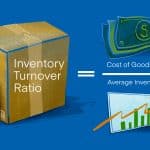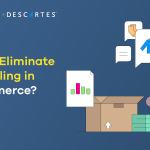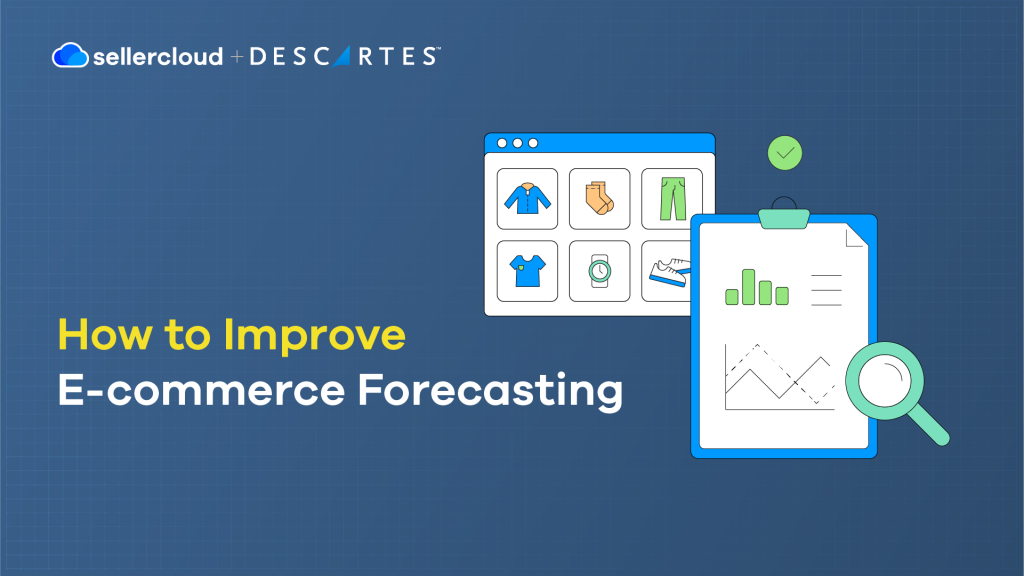
- Poor forecasting can result in many problems for ecommerce businesses. However, there are several ways to improve the accuracy of your forecasts.
- Sellercloud provides a data-driven approach to forecasting demand, enabling you to accurately order inventory and always fulfill demand across your channels.
Forecasting is about making future decisions based on past performance, and it is vital for making the right decisions to grow your business.
According to an article by Argano, “Companies with accurate forecasts are 10% more likely to grow revenue year-over-year and 2X as likely to be at the top of their field.”
However, many businesses don’t use proficient forecasting methods for their ecommerce businesses. The same article also states, “67 percent of organizations lack a formalized approach to forecasting altogether.”
Further to that, according to a blog post by Dooly, “By 2025, over 90% of B2B enterprise sales organizations will continue to rely on intuition instead of advanced data analytics, resulting in inaccurate forecasts, sales pipelines, and quota attainment.”
In this article, we’ll explain ecommerce forecasting, its biggest challenges, and how to improve forecasting accuracy.
What Is Forecasting in Ecommerce?
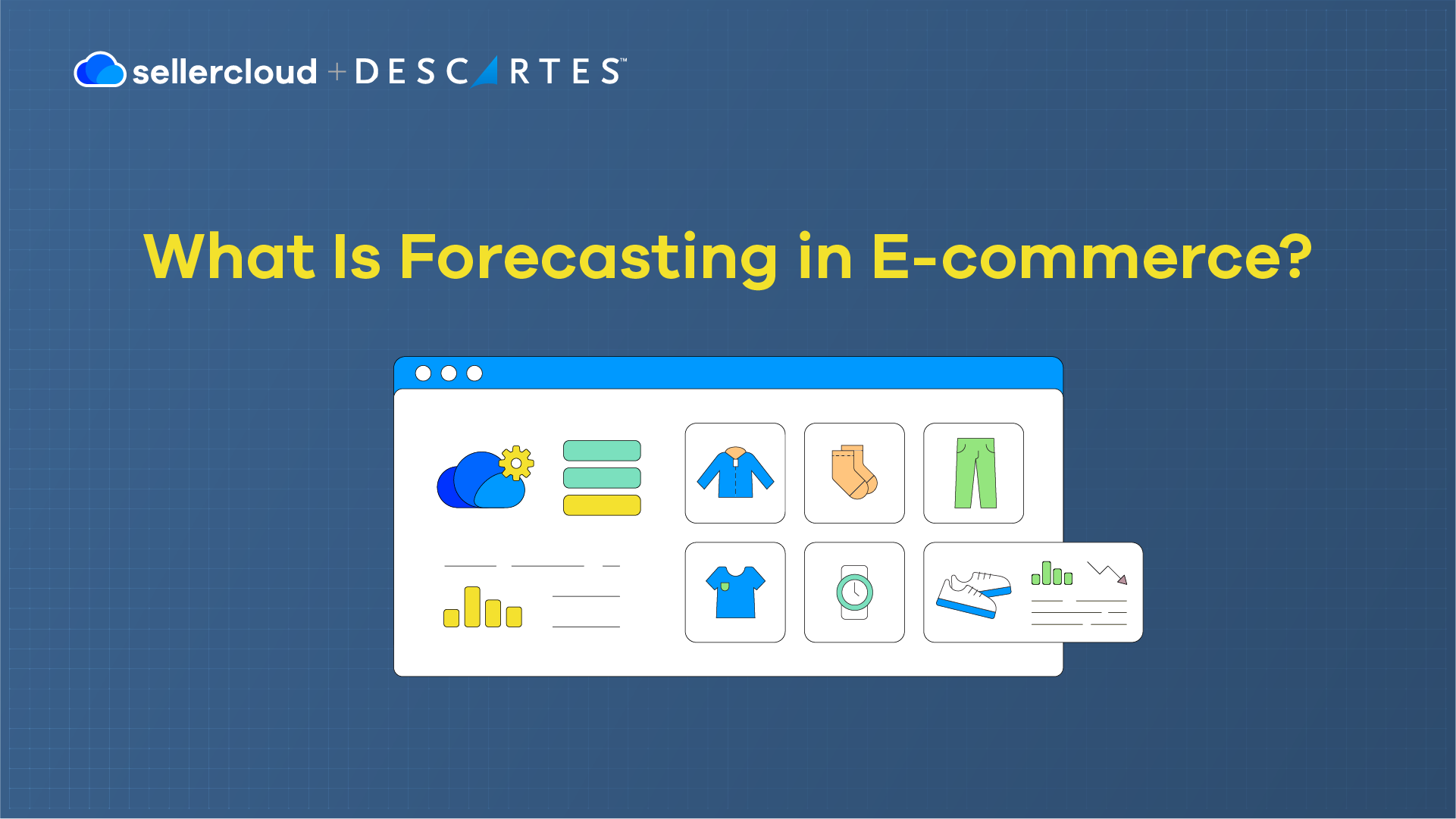
Ecommerce businesses use forecasting to estimate the quantity they should order for their products. This is typically done according to customer demand.
Forecasting uses historical sales data and considers your current inventory and sales velocity to estimate how much you need to order for a selected date. It is an integral part of running an ecommerce business.
There are two types of forecasting: qualitative and quantitative. Qualitative forecasting can be used when there is no data, but this is effectively guessing with nothing backing it up.
According to a Harvard Business Review article by John S. Hammond, Ralph L. Keeney, and Howard Raiffa, most people are too overconfident or overly cautious when forecasting. They say:
“Even though most of us are not very good at making estimates or forecasts, we actually tend to be overconfident about our accuracy. That can lead to errors in judgment and, in turn, bad decisions.”
They also said that: “Another trap for forecasters takes the form of overcautiousness, or prudence. When faced with high-stakes decisions, we tend to adjust our estimates or forecasts “just to be on the safe side.””
Quantitative forecasting is more efficient as it can be measured and based on evidence. It is the best method for running an ecommerce business.
There is also:
- Long-term forecasting. Forecasting for multiple years in advance and requires extensive data.
- Short-term forecasting. Usually forecasting for a few months up to a year—or specific events or periods where sales are high.
- Macro-level forecasting. Factors in external trends that can affect the entire industry, such as changing consumer behavior, a changing economy, or evolving competition.
- Micro-level forecasting. Used to drill down into specific external factors that could affect demand, for example, how the weather may impact demand.
You may complement your forecasting with multiple tools.
For example, in addition to any tools that forecast demand based on past sales, you may also check search volumes for products using Google Analytics to gauge whether people are searching for your products or if new products are emerging.
Why Is Forecasting Important in Ecommerce?
Forecasting is primarily important for informing you how much to order, whether the quantity is the same as the previous period, more, less, or not at all, according to demand.
Many businesses rely on forecasting daily, so they clearly understand current demand and adjust purchases accordingly.
When forecasts are accurate, it keeps inventory healthy (not too much or too little) and helps maximize profitability.
Forecasting is essential for your company’s cash flow and guiding your marketing strategy.
Ordering precisely what you need decreases your expenses as you don’t end up with excess inventory. With a healthier inventory budget, you can divert funds to other tasks like marketing.
Forecasting is also important if you sell perishable items—you don’t want to order too much of a perishable item that could expire before it is sold.
Forecasting also helps inform pricing decisions. For example, if demand is high but quantity low, the price can be increased.
The opposite is also true—if demand is low but quantity is high, you can lower prices to encourage sales.
You may also see potential opportunities to bundle items. For example, if demand for a product is decreasing, you may see an opportunity to bundle it with something with higher demand and increase order value.
Lastly, forecasting can be used to see the success of kits.
What to learn more about forecasting inventory? Check out Chapter 14 of our inventory management guide on inventory management forecasting.
What Are the Challenges of Ecommerce Forecasting?
Various factors can complicate ecommerce forecasting. Here are some of the most common that ecommerce businesses encounter.
Expanding to New Channels
One of the most significant forecasting challenges can be when you start selling simultaneously on multiple marketplaces.
Expanding internationally can be a further challenge. Products may do better or worse abroad; without historical data for your products in those regions, it can be difficult to forecast demand.
Supply Chain Disruptions
Supply chain disruptions can impact vendor orders and make it take longer for POs (purchase orders) to arrive. If possible, you may be able to factor disruption into your forecasting, and safety stock can also help.
However, if there is another pandemic, for example, it can be impossible to adequately forecast what to order and in what quantities.
Product Category
Forecasting also needs to consider the product types you sell. For example, luxury goods, jewelry, and watches may sell slower than cheaper categories like consumer goods.
Furthermore, different product types may experience seasonal demand fluctuations at different times of the year.
Lack of Accurate Data
A lack of accurate data or inept forecasting tools can greatly impact accuracy and render your forecast completely unreliable.
Furthermore, data from different sales channels can be time-consuming to collect if not automated. Managing all this information is also time-consuming.
Black Out Days
Blackout dates are specific dates or periods when regular sales patterns are disrupted by external factors, making them unreliable for forecasting.
These dates often coincide with sales events, holidays, or other occasions that lead to abnormally high or low sales volumes.
Blackout dates do not always follow consistent trends year over year. Including these outliers when forecasting can skew the data and generate inaccurate predictions.
Lead Times
Lead times are crucial in forecasting as they dictate how far in advance businesses need to predict demand to ensure sufficient inventory levels.
It is important to note the difference between vendor and manufacturer lead times.
Vendor lead times are often shorter and more consistent because they involve replenishing finished goods, making forecasts easier to adjust.
Manufacturer lead times, however, can be impacted by production cycles, raw material procurement, and factory schedules, making them less consistent and longer.
What Are the Biggest Problems Caused by Inaccurate Forecasting? Top 5
Inaccurate forecasting can cause a multitude of problems for your ecommerce business. Here are five of the most troublesome:
1. Overselling
Overselling occurs when you sell products you don’t have, typically via a marketplace. It increases order cancellations, which leads to customer complaints, tarnishes your reputation, and puts off new buyers.
More importantly, overselling increases your cancellation rate, which lowers your rating and, in the worst-case scenario, can get you banned from a marketplace.
Inaccurate forecasting can lead to overselling because you might not have ordered enough inventory to keep up with demand.
2. Excess Inventory
Excess inventory happens when you order far more than demand necessitates. You can end up with excess inventory if you inaccurately forecast demand being higher than it is.
Excess inventory is hard to shift. Although there may be some demand for the product, it is probably moving slower than other items that would better utilize the space.
3. Dead Stock
Excess inventory can become dead stock, which is inventory no one wants to buy. It’s not leaving the warehouse at all and is costing you dearly.
Dead stock can happen when products become technologically defunct or fall out of fashion.
4. FOMO (Fear Of Missing Out)
In ecommerce, FOMO or ‘Fear Of Missing Out,’ can be the feeling that you’ve missed out on a significant opportunity.
Inaccurately forecast demand as being lower than it is, and you might sell all your inventory too soon, failing to realize an emerging demand increase.
Because of this, your competitors will be making sales that could have been yours.
5. Impacts Profitability
As you can imagine, all the problems listed above impact your business’s profitability, which can stunt growth.
If your inaccurate forecasts led you to order too much or too little inventory, you either spent far too much on inventory or missed out on opportunities to increase revenue.
How to Improve Forecasting Accuracy in Ecommerce? Top Tips
Ecommerce sellers should always strive for forecasts that are as accurate as possible. If your forecasts are inaccurate, it puts your business at risk. Here are a few things you can do to improve forecasting accuracy.
Forecast Regularly
The further the date you forecast for, the more likely it will be inaccurate, and relying on a forecast made several days ago is a terrible idea.
The scenario may be different, and you might not be aware of some things that have changed. You may end up ordering too little or too much inventory.
To circumvent this, check your forecast every morning. Some businesses even re-forecast demand multiple times a day to ensure accuracy. Forecasting should be a continuous process.
Hire Buyers
Buyers are employees who only create POs and order inventory. They monitor inventory levels and can forecast the best quantity to order before generating POs.
Hiring buyers can reduce mistakes because you no longer have to juggle POs with other tasks. It reduces the risk of not running out of inventory, and if new POs are not needed, they won’t order.
Track Vendor Pricing
Tracking your vendors’ prices is wise because if demand is high but prices are falling, it could be an excellent opportunity to stock up on a product that sells well and increase your profits.
However, before you get too excited, it is good to know why a vendor’s prices are falling in case this opportunity could turn into excess or dead inventory.
How Does Sellercloud Make Forecasting Easier?
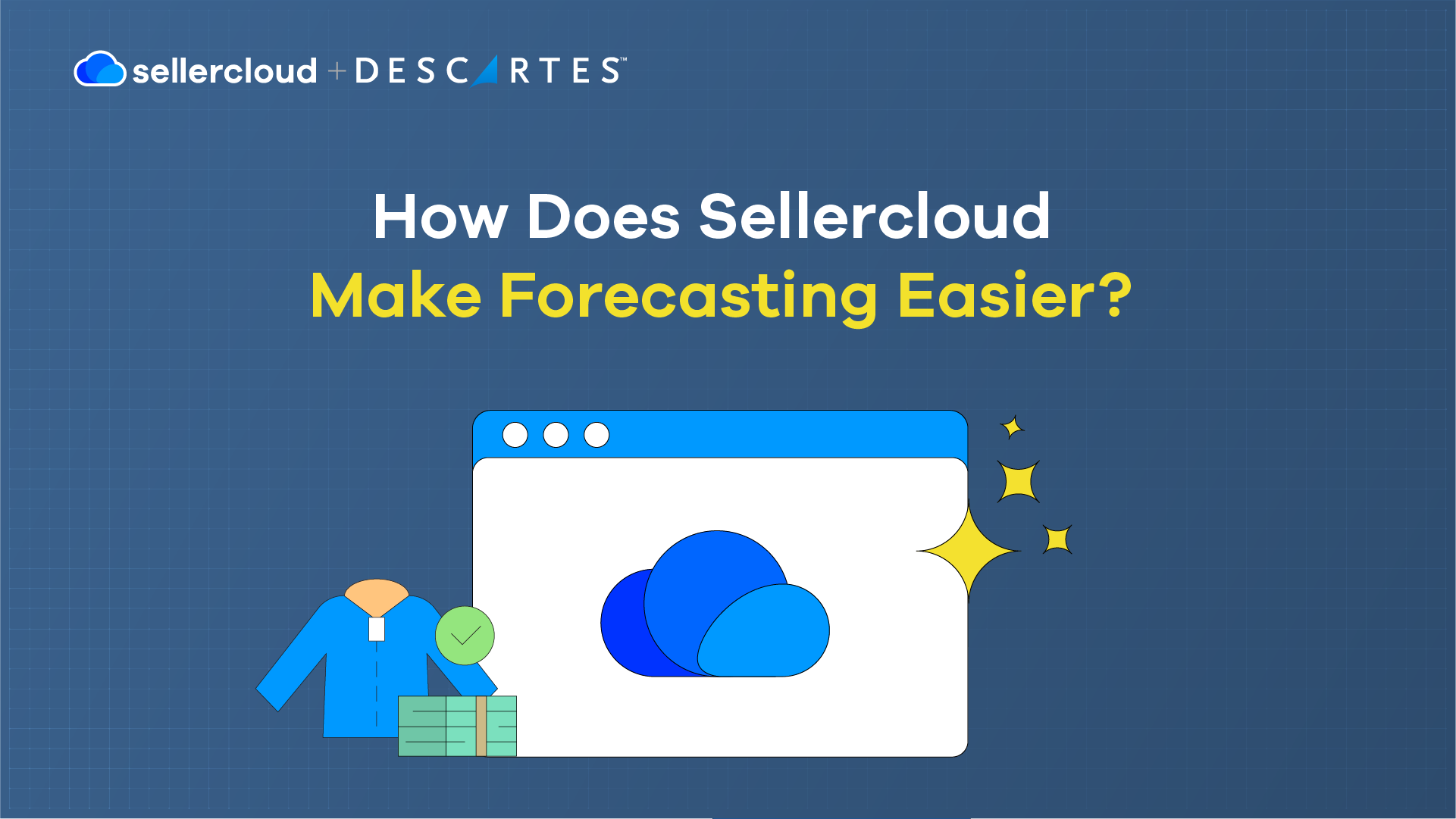
Sellercloud is a scalable ecommerce solution that unifies your marketplace channels, inventory and order management, ecommerce integrations, and much more.
Using Sellercloud’s predictive purchasing, ecommerce sellers can easily forecast how much to order based on current aggregate inventory, product velocity, PO ETA, and the previously selected sales period.
Sellercloud’s data-driven approach to forecasting removes the guesswork, reducing the possibility of over- and under-ordering inventory.
Furthermore, Sellercloud also offers predictive restocking for FBA and WFS, so you can keep your FBA and WFS inventory balanced and stay on top of Amazon and Walmart orders.
Last but not least, forecasting can be automated and customized, and you can integrate any external forecasting tool your business needs.
Book a demo today.
Key Points
Remember these key points about ecommerce forecasting.
- Ecommerce forecasting estimates the quantity of inventory businesses should order for the coming period based on previous sales.
- The biggest problems caused by inaccurate forecasting are overselling, excess inventory, dead stock, FOMO, and lower profitability.
- You can improve forecasting accuracy by forecasting regularly, hiring buyers to handle forecasting and ordering, and tracking vendor pricing.
- Sellercloud’s predictive purchasing determines how much to order based on aggregate inventory, product velocity, PO ETA, and the previously selected sales period.

